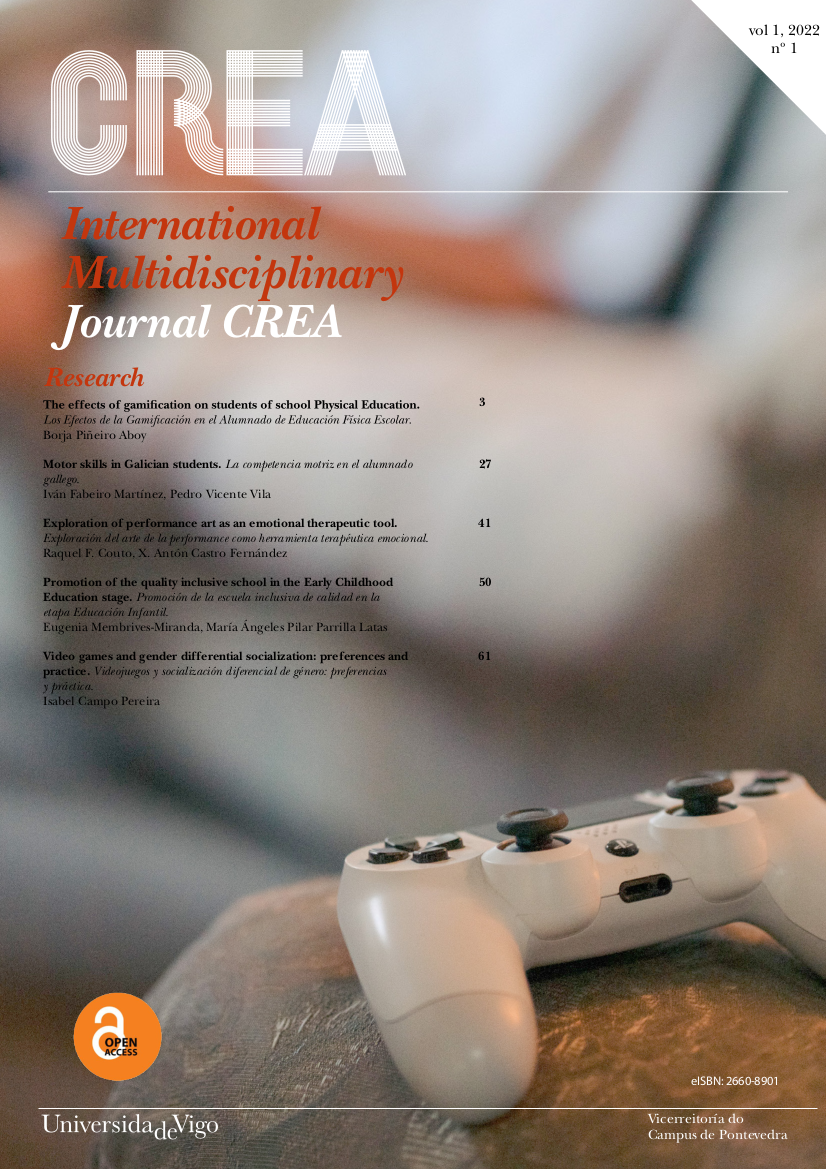Promotion of the quality inclusive school in the Early Childhood Education stage
DOI:
https://doi.org/10.35869/ijmc.v2i1.3894Keywords:
Inclusive education, inclusion, early childhood education, rare diseases, diversity, emotional comunicationAbstract
Diversity is part of our daily lives and together with it, the inclusive school emerges as a response to improve the quality of education. The aim of this study is to find out about and promote the process of educational and social inclusion in a classroom in the fifth year of Infant Education where there is a pupil with a rare disease. Based on a qualitative method of action-research with an ethnographic approach, different activities were developed, divided into four phases, which allowed us to obtain results and feedback. The development of the proposal led to an improvement in the perception of diversity, in the emotional atmosphere in the classroom and in the quality of education, in the inclusion in large group games, as well as in the expression of emotions, both in the pupil with a rare disease and in his or her classmates. An improvement in the social and emotional climate and development of the classroom was obtained. Classrooms are spaces of diversity, which goes hand in hand with the promotion of inclusive school models. It is therefore necessary to acquire key values, such as equity, in order to achieve inclusive societies in the future.
Downloads
Downloads
Published
How to Cite
Issue
Section
License

This work is licensed under a Creative Commons Attribution-NonCommercial-NoDerivatives 4.0 International License.
Copyright
After the acceptance of an article, the authors will be asked to complete a Publication Agreement. Acceptance of the agreement will guarantee the widest possible dissemination of information. Under this agreement, the copyright will be transferred to the Company / Institution if the manuscript is accepted for publication. Permission from the Company / Institution is required for resale or distribution outside the institution and for all other derivative works, including compilations and translations. If extracts from other copyrighted works are included, the author (s) must obtain written permission from the owners of the copyright and credit rights of the source (s) in the article.
Rights of users
All the articles published in the magazine will be immediately and permanently accessible so that any user can read and download them. The (Re) use allowed for third parties of the published content will be defined by the following Creative Commons license: Creative Commons Attribution-Noncommercial-No Derivative Works (CC BY-NC-ND). For non-commercial purposes, allow others to distribute and copy the article. It also allows its inclusion in a collective work (such as an anthology), provided that the author (s) is cited and the article is not altered or modified.
Publication cost
The author of the accepted articles should not pay for its publication. The Society or the Institution that owns the journal finances the production costs of the manuscripts.








